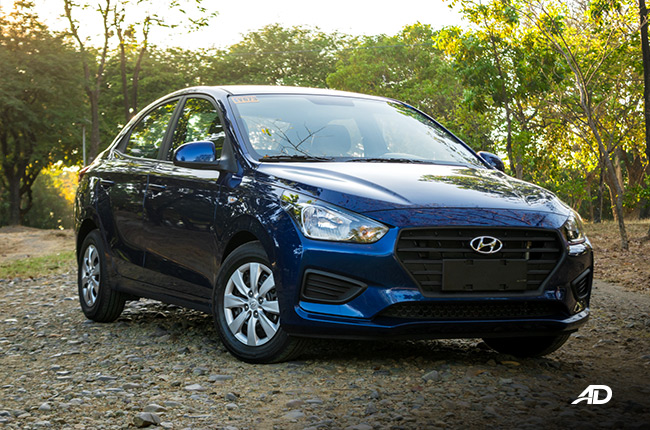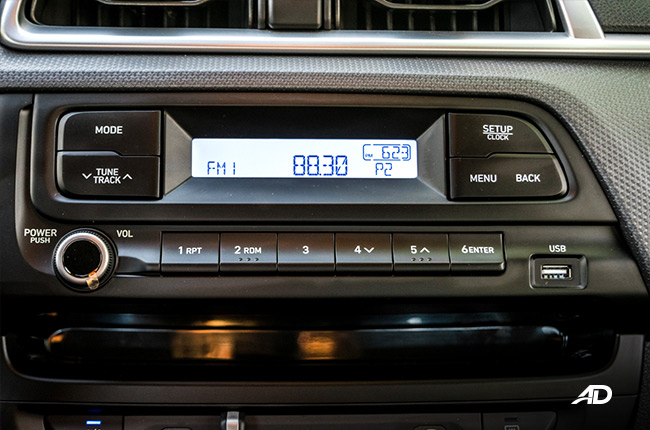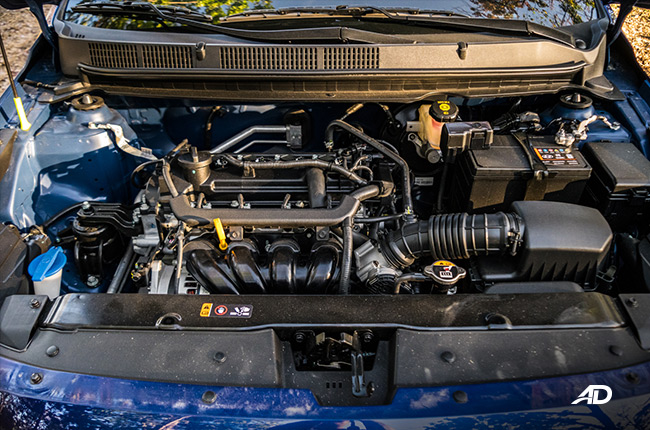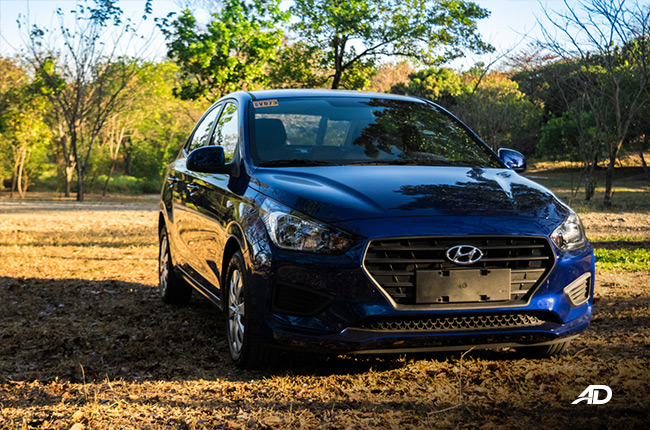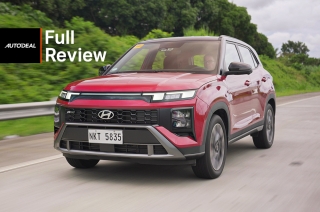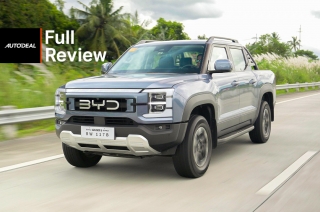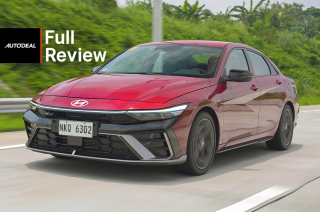
In the age of SUVs and crossovers, subcompact sedans still sell well in the Philippines. The main reason? Their price tags. At around P700,000, you can get an entry-level vehicle that isn’t short of features, has a decent ride quality, and, of course, has a good ol’ trunk.
But Hyundai Asia Resources Inc. (HARI) wants to push the boundaries further. It surprised the country with an all-new sedan that’s slotted below the popular diesel-powered Accent. Called the Hyundai Reina and hailing from the manufacturing plants in the People’s Republic, it’s supposed to be a game-changer in the competitive subcompact sedan segment.
Or is it? More importantly, does its affordable price tag mean better value for money? We got first dibs on the Hyundai Reina for an in-depth review to see if it fits to be the new Queen of subcompact cars.
Engine Output (HP), Acceleration, Transmission, Handling 3.5/5
Exterior & Interior Design, Quality, Fit and Finish, Ergonomics 3.5/5
Cabin Comfort, Suspension, NVH Insulation 4.0/5
Convenience Technologies, Active and Passive Safety Features 4.0/5
Amount of the vehicle you get for the price, Fuel Efficiency 4.0/5
- It has a semi short-throw shift stick.
- Lots of cubbyholes and pockets to put your stuff into.
- Massive trunk space.
- Rear end doesn't match the front.
- Handling can be greatly improved.
- NVH insulation needs improvement.
Exterior
Let’s talk about the 2019 Reina’s styling. Up front, it follows Hyundai’s Fluidic Sculpture 2.0 design language, donning a cascading grille with a black plastic outline. The 14-inch wheels are steelies, though, but they have wheel covers and the brakes at the front are discs. There are some sporty cues that aren’t overdone, which is a good thing.
Overall, the front fascia of the Reina has a simple yet effective design, somehow looking inspired. The rear has a different story to tell, though. It isn’t as inspired as the front end plus the taillights look like the Nissan Almera’s. It’s like the rear is from a totally different car but with Hyundai badges.
As its saving grace, the media unit’s Blue Passion paint looks really good, with a little sparkle going on.
Interior
The Fluidic Sculpture 2.0 design language isn’t observed inside the Reina. It has a straightforward, horizontal layout with controls clustered nicely together for easy operation. There are some satin chrome accents that outline the air conditioning vents and decorate the steering wheel. Majority of the interior is made up of hard plastic with a textured finish, as expected from its price point. The polyurethane steering wheel material is definitely a pleasant surprise.
Space is okay for the average-sized Filipino but for taller and wider individuals, it can get a bit cramped. The rear seats are perfect for two people but will get claustrophobic with three healthy individuals. Another space-saving thing in the Reina is the window controls that are positioned under the A/C panel. It may take some time to get used to but as a trade-off, you get a huge door pocket that can fit even the biggest smartphones. Trunk space is really massive, as well.
As for ride comfort, the 2019 Reina has a notable one, expected from its McPherson strut and coupled torsion beam suspension setup. Air conditioning is okay but it works harder at high noon because of the huge windows, so tinting is definitely a must. NVH insulation needs improvement, though.
Technology
Surprisingly, there are things in the Reina that I didn’t expect to see in an entry-level sedan of its price. These things include speed-sensing door locks, headlamp levelizer, and a legible 2.8-inch LCD trip meter with a lot of modes. The trip meter also has a shifting coach that tells you when to shift, mostly at around 2,000 RPM. Lastly, the car has an auto door-unlock function that engages when you turn the engine off.
But as expected, the infotainment is a basic 1-DIN FM/AM radio with USB port. The USB doesn’t recognize iPhones or any other smartphones, but it charges them quite quickly. Sound is okay for a two-speaker setup, but if the small head unit is ticking you off, an outsourced 9-inch Android touchscreen head unit can be requested through Hyundai dealerships for an additional P28,000.
Safety
The Reina doesn’t have many safety features. There’s the dual front airbags, ABS, ISOFIX child seat anchors, and a seatbelt reminder for the driver. But then again, that’s pretty much expected for its price.
Driving & Handling
As an entry-level sedan with a 1.4-liter gasoline engine, the Reina produces pretty great output numbers that are on top of its class. Comparing to the Suzuki Dzire and Mitsubishi Mirage G4, its 94 horsepower and 132 Nm of torque are more than what the segment veterans can produce by at least 12 hp. Of course, its twin, the Kia Soluto, does have the same engine output.
When it comes to the actual drive, the Reina neither impressed nor disappointed – it’s just right. It did what it’s supposed to do as a city car. Its power delivery matched the accelerator input but it wasn’t as torquey as what the spec sheet suggests. Getting up to legal speed limits weren’t an issue and cruising at 90 km/h on the highway required staying at 2,200 RPM. Not bad for a 1.4-liter.
What’s notable was the 2019 Reina’s semi short-throw manual transmission. The shifts weren't as crispy as the Volkswagen Santana but it’s close, I reckon. The clutch bite height wasn’t high, which made managing the stick shift a cinch. Handling can be improved, though, as it’s loose and sometimes lifeless – a little tightening would mean stabler highway drives.
Fuel Economy

The Reina registered very impressive fuel efficiency numbers. Snail-paced drives within the city’s heavy traffic returned 10.8 km/L while faster drives at around 60 km/h read 14.3 km/L. An hour on the highway with an average speed of 90 km/h clocked in 23.8 km/L.
Verdict

If you’re looking for a fast car, I’m surprised you’ve opened this article, let alone reached the bottom of this review. The 2019 Hyundai Reina isn’t what you’re looking for. It’s a city cruiser that can casually go out of the urban jungle from time to time.
After a few days with the newest subcompact sedan, it isn’t hard to look pass through its imperfections when it comes to driving dynamics or the extensive use of plastics in the cabin. With its price tag, you get a very good value for a car that’s perfect to be anyone’s first. It has its shortcomings, as any car does, but really, at P598,000, what more can you ask for?
Plus, those fuel efficiency numbers are outstanding, and that alone could already qualify the Reina as a subcompact royalty.
2019 Hyundai Reina Exterior Photo Gallery
2019 Hyundai Reina Interior Photo Gallery
Latest Review
-
2026 Hyundai Creta N-Line Review / Review
The Creta N-Line isn’t just a Creta with sporty looks; it’s got the performance and bite to back up its style.
4.3 / 5 -
2026 BYD Shark 6 DMO Review / Review
Can a hybrid pickup truck break the mold of what pickup trucks can be? The Shark 6 DMO has something to say about that.
4.6 / 5 -
2026 Hyundai Elantra N-Line Review / Review
The Elantra N Line isn’t as hot as the N, but can it still deliver the sporty sedan thrill we seek? We find out.
4.2 / 5
Popular Articles
-
Electric Vehicles in the Philippines for under P1 million
Jerome Tresvalles · Aug 19, 2025
-
Top 3 Cars For Every Lifestyle—What Cars Are Right For You? | Behind a Desk
Caco Tirona · Apr 24, 2024
-
5 Tips to Maximize Fuel Efficiency
Jerome Tresvalles · Sep 09, 2024
-
Five driving habits that are draining your fuel tank
Jerome Tresvalles · Jun 24, 2025
-
Can engine braking harm your engine?
Jerome Tresvalles · Sep 11, 2025
-
Do electric cars even need maintenance?
Jerome Tresvalles · Oct 23, 2024
-
Best vehicles for an active outdoor lifestyle
Shaynah Miranda · Jul 25, 2024
-
How to drive different types of vehicle transmissions
May 23, 2024
-
5 easy ways to keep your car interior clean
Allysa Mae Zulueta · Nov 15, 2021
-
How to survive Metro Manila traffic
Earl Lee · Aug 16, 2022

